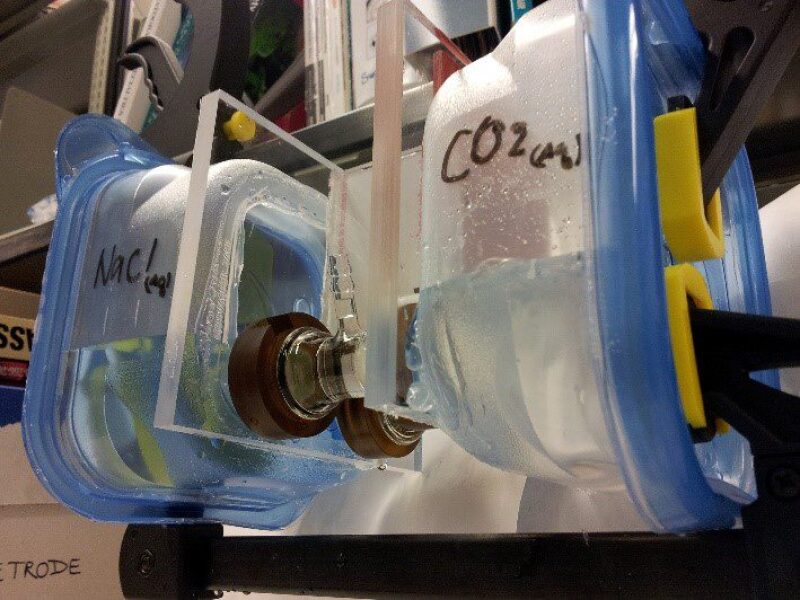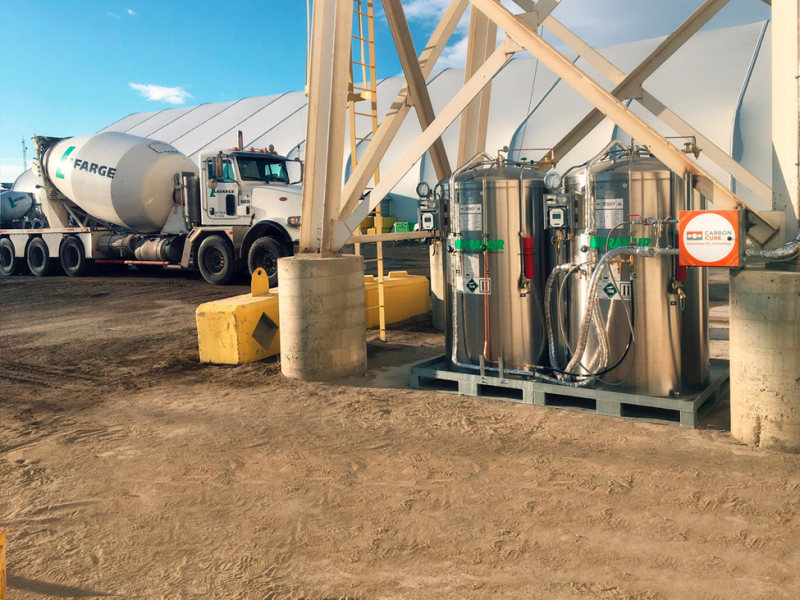As industries and governments struggle on a global scale to stop carbon emissions and accelerate progress toward the 2 °C path set out in the Paris Agreement, efforts are also growing to tackle emissions and climate change on a grassroots level. In Alberta, for example, a $35-million challenge to turn CO₂ emissions from a waste stream into valuable products for the Canadian province has led to the commercialization of two new technologies that could deliver greenhouse gas (GHG) reductions of almost 2 million metric tons per year by 2030—that’s equal to GHG emissions from 424,628 passenger vehicles driven for one year or carbon sequestered more than 33 million tree seedlings grown for 10 years.
As co-winners of Emission Reductions Alberta’s (ERA) Grand Challenge: Innovative Carbon Uses, Mangrove Water Technologies and CarbonCure Technologies each received $5 million to help commercialize their technologies to capture and use CO2 to deliver environmental and economic benefits in Alberta and around the world. The two companies were the final winners of ERA’s 5-year, $35-million challenge, which was designed to accelerate unique, promising, and impactful technologies to convert CO₂ emissions into new carbon-based products and markets.
Mangrove Water Technologies—From Waste Brines to Value Generators
Mangrove Water Technologies combines fuel-cell and electrodialysis-based technologies to convert salts into valuable chemicals and desalinated water for onsite use in oil sands, mining, and other industrial process facilities that require waste brine disposal or that have brines that need to be converted to chemicals such as hydroxide, acids, and others.
“Our solution allows plants to reduce water consumption while recovering water to be used on the plant, and emissions are reduced by not having to produce and truck chemicals,” said Mangrove Cofounder and Chief Executive Officer Saad Dara. The solution reduces operational costs, water consumption, wastewater generation, and carbon footprint by eliminating the need to transport chemicals to sites and similarly eliminating the need to haul water away, according to Dara.
Dara describes Mangrove Water Technologies as a “bolt-on, end-of-tailpipe solution” that doesn’t interrupt or need to be integrated into any processes. “We can show up with skid-mounted equipment that sits at the site, accepts water and brine, and provides water and chemicals,” he said. “It’s very diverse and flexible in its application,” he continued. “It takes not just sodium chloride brines, but different salts within the system, including lithium chloride and sodium sulfate.”
The term “incubator” has special meaning for Dara and his partners at Mangrove. The first proof of concept for what would eventually become Mangrove Water Technologies was in a cell made of Tupperware containers and milk jugs in a laboratory in the University of British Columbia’s Chemical Engineering Department. Dara and his partners used the results to apply for Round 1 of the ERA Grand Challenge. The $500,000 million seed money from that round allowed the group to form a spin-off company. The $3-million funding the company received as one of the four finalists from Round 2 enabled them to bring their concept to a commercial solution. “The Round 3 funding will allow us to fully commercialize our technology in Alberta and enable Mangrove to export the technology to other markets across the globe,” said Dara.
Mangrove will commercially deploy its technology at scale at an oil sands mining site in Alberta. If adopted widely, the company estimates an annual value of $450 million for its services in the oil sands mining sector and the potential to reduce 1.4 million metric tons GHG per year by 2030.

CarbonCure Technologies—Making Concrete More Sustainable
Concrete is the world's most abundant man-made material and its most important and widely used construction material. Unfortunately, the process of making cement—the key ingredient that gives concrete its strength—accounts for approximately 7% of the world’s GHG emissions. CarbonCure Technologies is working with the cement and concrete industries to reduce the carbon footprint of ready-mixed concrete by using CO2 as a beneficial material in its production.
The CarbonCure process injects recycled CO2 from industrial emitters, including oil and gas operations, as an admixture in concrete production. Once injected, the CO2 chemically converts into a mineral that becomes permanently sequestered in the concrete. The mineralization process improves the concrete’s compressive strength, so producers can adjust cement content while maintaining its quality.
Reducing the cement content also delivers material cost savings that offset the cost of the technology, according to CarbonCure Senior Director of Sustainability Christie Gamble.
“Our system helps make concrete products more competitive with other building products, including wood,” said Gamble. “There is a perception that wood is more sustainable than concrete, and that has impacted market share, but this is based on limited understanding of the full lifecycle impact. There is much more to be understood,” she said.
Since being introduced commercially in 2015, approximately 3.3 million cubic meters of concrete have been produced with the CarbonCure system, achieving material savings and avoiding more than 50,000 metric tons of CO2 emissions, says Gamble. With broad market adoption, the technology portfolio could provide an estimated 530,000 metric tons of CO2 savings per year by 2030 in Alberta alone.

A Unique Challenge
“The Grand Challenge: Innovative Carbon Uses was unique in terms of ERA projects because of its longer (5-year) duration and stage-gate-type process,” said ERA Chief Executive Officer Steve MacDonald. “Innovation takes time, patience, and support, and the capacity and willingness to see a project through. It also requires risk-taking, casting the net wide to come up with a deeper pool of ideas, and supporting the innovators beyond just funding,” he said.
ERA launched the challenge in 2013 by committing $35 million in funding over a three-stage, 5-year process to help commercialize innovative technologies from around the world that would deliver significant and verifiable GHG reductions and convert CO2 into valuable products and markets in Alberta. Prize winners could also use their funding to expand commercialization beyond Alberta. Funding came from the carbon price paid by large final emitter (LFE) industrial facilities throughout the province. To demonstrate market demand, all contributions from ERA to the co-winners of the final round had to be matched with private dollars.
In the first round of the challenge, completed in April 2014, 24 winners selected from 344 submissions each received seed grants of up to $500,000. Round 2, completed in March 2017, resulted in four finalists advancing, with grants of up to $3 million each. The four groups had two years to develop their proposed technologies and demonstrate a clear path toward commercialization by 2020 and a 1-million Mt net reduction of GHG emissions annually. Upon successful project completion within the two-year window, Round 2 winners submitted a final report and a detailed proposal for the final round of the challenge.
During each round, projects were subjected to due diligence and assessed by an expert advisory panel of global thought leaders that represented a diverse community of stakeholders and influential bodies. Based on advice from the advisory panel, ERA’s board of directors chose to split the final $10-million award into two $5-million commercialization grants.
“The unique structure of the challenge gave innovators and technical experts from around the world the opportunity to collaborate on breakthrough carbon use technologies that can be commercialized right here in Alberta and then expanded to deliver improved environmental and economic outcomes at home and around the world.” said MacDonald. “It also helped support the development of multiple ideas that can progress simultaneously,” MacDonald continued, comparing the challenge to popular televised challenges such as “American Idol,” that often launch careers not just for the grand winners, but also for other competitors.
ERA, which began operations in 2009, works with government, industry, and innovators to help Alberta transition to a lower-carbon future with a stronger, more diversified economy. The organization recently began accepting applications for a new, $50-million Natural Gas Challenge. Deadline for applications is 19 December, at 5 p.m. US Mountain Time. Eligible technologies can come from anywhere the world, but projects must be piloted, demonstrated, or deployed in Alberta. For more information, click here.

